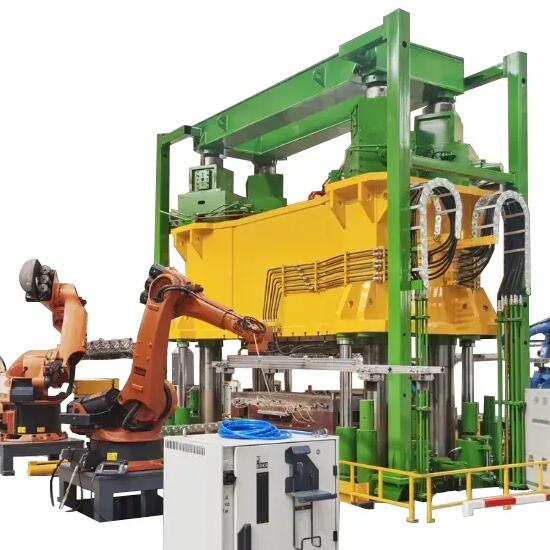Revolutionizing Manufacturing: Key Features of Hydraulic Presses for New Generation SMC Forming
2024-06-24
In the ever-evolving world of manufacturing, innovation is key to staying ahead. One such innovation is the hydraulic press designed for new generation SMC (Sheet Molding Compound) forming. This advanced machinery offers several key features that set it apart from traditional hydraulic presses. In this blog, we will explore these distinguishing features and understand how they revolutionize the manufacturing process.
Understanding SMC Forming
Before diving into the features, it’s important to understand what SMC forming is. SMC is a composite material used in high-strength, lightweight applications. It is composed of a mixture of polymer resin, filler, fiber reinforcement, and additives, which is then molded into shape using a hydraulic press. The new generation of hydraulic presses has been specifically designed to handle the unique requirements of SMC forming, enhancing efficiency and product quality.
Key Features of Hydraulic Presses for New Generation SMC Forming
1. Precision Control Systems
Advanced Automation: New generation hydraulic presses are equipped with sophisticated control systems that allow for precise automation of the pressing process. These systems ensure consistent pressure and temperature control, which are critical for achieving high-quality SMC parts.
Real-Time Monitoring: The integration of sensors and real-time monitoring technology allows operators to track the pressing process closely, making adjustments on-the-fly to maintain optimal conditions and prevent defects.
2. Enhanced Pressure Capabilities
High-Pressure Tonnage: These presses are capable of exerting higher pressure compared to traditional presses, which is essential for the proper molding of SMC materials. This high-pressure capability ensures that the material flows correctly and fills the mold completely, resulting in stronger and more precise components.
Controlled Pressure Profiles: The ability to program and control pressure profiles throughout the molding cycle ensures that each part is formed with the exact pressure needed at different stages, reducing material stress and improving overall integrity.
3. Temperature Management
Integrated Heating Systems: Temperature control is crucial in SMC forming. New generation hydraulic presses come with integrated heating systems that maintain the optimal temperature throughout the process. This uniform heating prevents thermal gradients that could lead to warping or incomplete curing.
Cooling Systems: In addition to heating, advanced presses often include cooling systems to rapidly bring down the temperature after molding. This helps in maintaining the dimensional stability of the formed parts and speeds up the overall production cycle.
4. Energy Efficiency
Regenerative Hydraulic Systems: Modern hydraulic presses utilize regenerative hydraulic systems that recover energy during the pressing cycle. This not only reduces energy consumption but also lowers operational costs, making the process more sustainable.
Variable Speed Drives: The incorporation of variable speed drives allows the press to adjust its power usage dynamically based on the specific requirements of the forming process, further enhancing energy efficiency.
5. User-Friendly Interface
Intuitive Control Panels: The new generation presses are designed with user-friendly control panels that simplify the operation. These interfaces often include touchscreens and intuitive software that make it easier for operators to set parameters, monitor progress, and troubleshoot issues.
Data Integration: Many of these presses offer data integration capabilities, allowing for seamless communication with other manufacturing systems. This integration facilitates better data management, quality control, and process optimization.
6. Robust Construction and Durability
Heavy-Duty Frames: Designed to handle the high pressures and temperatures required for SMC forming, these hydraulic presses are built with heavy-duty frames and components that ensure long-term durability and reliability.
Low Maintenance Requirements: Advanced materials and engineering reduce the maintenance needs of these presses, minimizing downtime and increasing productivity.
Conclusion
The hydraulic press for new generation SMC forming represents a significant advancement in manufacturing technology. Its precision control systems, enhanced pressure capabilities, advanced temperature management, energy efficiency, user-friendly interfaces, and robust construction set it apart from traditional hydraulic presses. These features not only improve the quality and consistency of SMC parts but also enhance overall production efficiency and sustainability.
As industries continue to seek innovative solutions to meet their manufacturing needs, the adoption of these advanced hydraulic presses is likely to grow. Embracing this technology can lead to superior product performance, reduced operational costs, and a smaller environmental footprint, making it a game-changer in the world of manufacturing.



